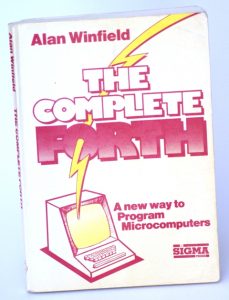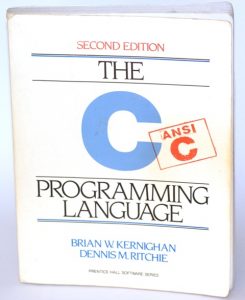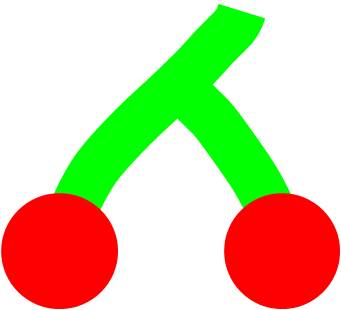I wrote my first computer program at school in the language CESIL ‘Computer Education in Schools Instructional Language’ back in 1972. A local government office in Carmarthen (south Wales) let us send to them (via the post) Basic language programs, written on coding sheets which they typed onto standard 80 character punch cards and then ran on their computer system, printed the output and posted the output back to the school. We usually found that either we, or they, had typed something wrong so the whole thing had to be redone on a minimum of one week turn around. The good old days!
The headmaster (Mr J. Hill) and the deputy head (Mr W. Davies) were both mathematics teachers. Although Mr Davies was close to retirement he was very up-to-date. He acquired a Sharp desktop calculator (I think it had 16 Nixie display tubes, it might have been the model Comper 363P) and had a magnetic card slot that could hold about 100 commands, our very own programmable device. Algorithms to calculate pi and automated numerical analysis were suddenly within my reach.
Whilst at Bristol university studying mathematics and physics I did virtually no computing except for a short course on Algol-W using the obligatory punch cards. When I finished university in 1977 I decided to join the Royal Navy as an instructor officer. In all of my interviews I emphasised my wish to focus on electronics. This pleased all of the interviewers since the Navy was having problems getting enough electronics instructors. Then, whilst completing my 13 week officer training in the Royal Navy officer training college in Dartmouth, I think it was on the 5th Dec 1977, their Lordships in the form of the Instructor Officer appointer sent me a communication informing me that I was to proceed to HMS Caledonia at Rosyth, east Scotland, 14 miles north of Edinburgh and to teach marine engineering topics such as ship design and gas turbine theory. No electronics!
I subsequently found out that the appointer had decided that the vacancy at HMS Caledonia was best filled by an officer who had no dependant family since it was so far away, and that since I was “unattached” I would do nicely! When I contacted the appointer about the electronics “issue” he said “sorry” but maybe I could move when the assignment at HMS Caledonia was over i.e. in 2 years time. So I put on the dark blue suit with its two golden rings on each sleeve and went in the first week of 1978 “north” to Rosyth. Within 3 months I handed in my resignation and had to work 6 months notice.
On leaving Her Majesty’s stone ship in Rosyth I managed to get a Science Research Council grant to study telecommunications on a M.Sc. at the University of Aston in Birmingham. At last I was back to electronics (sort of), with some computing (Texas 9900 procesors).
After finishing the course, but without the project needed for the M.Sc. I was head hunted by Plessey and ended-up at Edge lane, Liverpool as a System-X hardware design engineer. And just about everything that had to be done there, was done with processors (initially Intel i8080, then i8085 and then the i80x86). Happiness had arrived!
 Back in 1987 I thought, based on 15 years programming including 8 years in assembler on Intel 80×86 machines (embedded systems in and around an ISDN telephone network), that I knew a bit about programming. But in late 1987 when I was playing around with a disk of public domain applications for the Atari ST I was totally unable to make sense of a interpretive program, I could not even find the right command to stop the program. I was so “challenged” that I decided to buy a book and find out what this “Forth” was all about. If I remember correctly the program that “challenged” me was called “Dragon Forth”.
Back in 1987 I thought, based on 15 years programming including 8 years in assembler on Intel 80×86 machines (embedded systems in and around an ISDN telephone network), that I knew a bit about programming. But in late 1987 when I was playing around with a disk of public domain applications for the Atari ST I was totally unable to make sense of a interpretive program, I could not even find the right command to stop the program. I was so “challenged” that I decided to buy a book and find out what this “Forth” was all about. If I remember correctly the program that “challenged” me was called “Dragon Forth”.
Since them I have implemented “Forth” like interpreters on various machines and in various languages including:
- Motorola 68000 assembler on an Atari ST, a CLI only interpreter
- Pascal on a Dec-VMS 11/720, a CLI only interpreter
- SPARC assembler on a Sun workstation, the interpreter supported its own GUI commands based on Motif
- A “C” langauge based program running under Windows 98 upto Win-7 in various forms (CLI only, then a Motif GUI, then a Win32 based GUI version)
- Since then I have ported the “C” core onto various flavours of Linux on x86 machines, again in various forms (CLI only, Motif GUI, GTK++ based GUI)
- The very latest version (2013) was a port of the Linux / GTK++ version onto the remarkable little machine, the Raspberry PI.
There is no question in my mind, that the interpreter(s) that I have developed and that are the subject of this webpage are children of the Forth programming language. My efforts do not, in my opinion, extend the concepts of Forth. My interpreter simply has a few (?) more commands than the ANSI standard Forth, to provide functionality that I want.
In its current incarnation my “Forth” like interpreter supports the development of an application (with GUI, DLL access etc) in an interpretive environment, and then allows the developed application to be embedded into the interpreter to create a executable.
I do not intend to release the source code of any of the interpreters that I have developed. But I will release the interpretive executable that I have developed that runs on the Microsoft Windows operating system.
When I started this web site the idea was to make available my “Forth” like interpreter program, which I call RIPE.
I could not use the domain RIPE since it belongs to someone else. So I decided on the name RipeTech instead. Rapid Interactive Programming Environment Technology
But when I think of the word ripe I often associate it with an old English folk song called Cherry Ripe by the poet Robert Herrick, with music by Charles Edward Horn.
It is amazing what they taught me in primary school around 1961.
So I created a logo (okay childish, maybe even stupid) based on two cherries on a stem.


There is one language, and the language is “C”.
